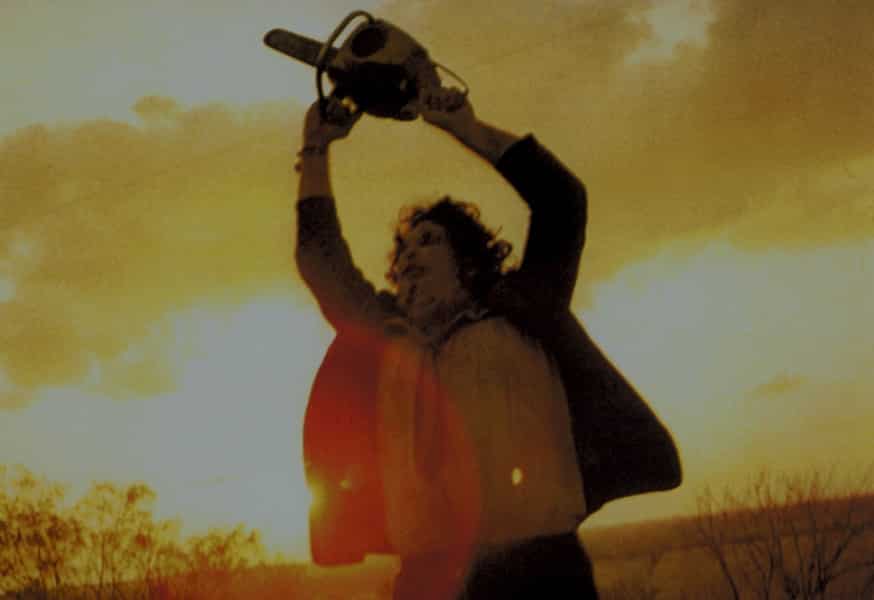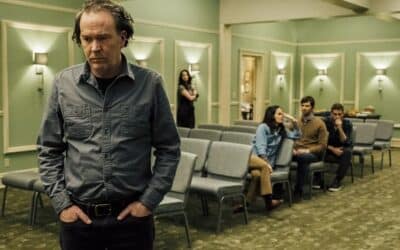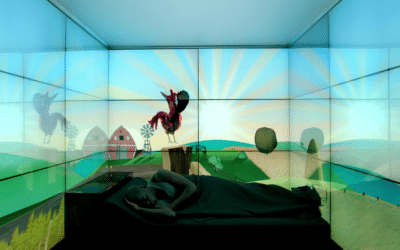
Feature
The Appeal of Slasher Horror
J.C. Bratton
“You don’t understand me. You are not expected to. You are not capable of it. I am beyond your experience.”
— Richard Ramirez, “The Night Stalker” (November 1989)
We have a dark fascination with serial killers.
On Netflix over the 2021 MLK holiday weekend, the #2 most popular pick was Night Stalker: The Hunt for a Serial Killer, a docuseries about Richard Ramirez, who slaughtered countless women, men, and children in the mid-1980s. Also, among the Top 20 Podcasts for 2021 are “Crime Junkie,” “My Favorite Murder,” “Morbid: A True Crime Podcast,” and Dateline (their Podcasts are heavy in true crime/unsolved mysteries).
We know their names: Jack the Ripper, Ed Gein, John Wayne Gacy, The Zodiac Killer, The Hillside Strangler, Ted Bundy, Jeffrey Dahmer. Serial killers live in infamy, yet are also steeped in a strangely erotic appeal. It’s no wonder that authors and filmmakers embrace the psychotic as stars of many horror franchises: Freddy Krueger, Jason Voorhees, Michael Myers, Leatherface, Norman Bates, the list goes on and on …
So what’s the appeal? We can turn to science for some potential answers.
1 Primal Instincts
Criminologist Scott Bonn pointed out that “[serial/slasher killers] appeal to the most basic and powerful instinct — survival. The total disregard for life and the suffering of others exhibited by serial killers shocks our sense of humanity and makes us question our safety and security.”
This questioning of safety and security leads to primal fears. According to psychologists, fear is a vital response to physical and emotional danger that has been pivotal throughout human evolution, particularly in ancient times when humans regularly faced life-or-death situations. It’s paradoxical in the sense that we want to shy away from things that make us afraid; yet, horror fiction and film naturally draw us in. When it comes to potential threats to our humanity, we seem to be conditioned to pay extra close attention.
Dr. Karl Albrecht, a physicist and executive management consultant, indicated that fear can be broken down into 5 fundamental forms: extinction, mutilation, loss of autonomy, separation, and ego-death. So if we think about slasher horror, we can easily find examples these forms of fear:
Extinction — survival kicks into high gear; someone dangerous with a knife is coming after you, it triggers that innate fear; hence, you scream and run for the hills!
Mutilation — losing a body part is obviously very painful; we cringe when we learn about people being brutally murdered and dismembered.
Loss of Autonomy — if we think about Laurie Strode from the Halloween franchise, she was living in fear of Michael Myers. There was no freedom; she couldn’t escape him.
Separation — “Paul!? Paul!? Where’s Paul?” Ginny from Friday the 13th Part 2 questioned at the end of the movie as she was gurneyed into the back of an ambulance after her battle with a pre-hockey mask Jason Voorhees. Obviously, losing a friend, particularly one she was romantically involved with, would strike fear into her heart.
Ego-death — a complete loss of oneself. If you go back to the original Texas Chainsaw Massacre, Sally completely “loses it” after being tormented by Leatherface and his insane family. She would never be the same again.
2 Morbid Curiosity
Psychotic killers are inexplicable and have no clear, consistent motive; they are driven by inner demons. Their crimes are exotic and tantalizing, resulting in a morbid, intense curiosity by everyday people to comprehend the incomprehensible. With regards to true crime, for example, Dr. Katherine Ramsland, Ph.D., a professor at De Sales University, explains: “Part of our love of true crime is based on something very natural: curiosity. People reading or watching a true crime story are engaged on several levels. They are curious about who would do this, they want to know the psychology of the bad guy, girl, or team. They want to know something about the abhorrent mind. They also love the puzzle — figuring out how it was done.”
3 Confronting Fears
Witnessing destructive behaviors could possibly be beneficial as a coping mechanism or learning to confront our fears. In an excerpt, Dr. John Mayer, clinical psychologist at Doctor On Demand, explained that “the healthy mechanism of watching disasters is that it is a coping mechanism. We can become incubated emotionally by watching disasters and this helps us cope with hardships in our lives…”
We may be fascinated with violence and destruction as a way of assessing how we would handle ourselves if put into a similar situation. Iconic horror master Wes Craven, who brought us Freddy Krueger, stated in a 2006 interview: “The most civilized countries can do the most uncivilized things, or people that appear perfectly normal can be deadly or frightening or whatever. All kids want to feel like they can overcome the worst monster. So films that show the worst monsters attacking teenagers is perfect fare because then they can sort of identify with characters that are facing the worst. ‘Grimm’s Fairy Tales’ are the same way. Before it got politically correct, somebody was going to throw Hansel and Gretel in the oven and burn them up. And kids ate it up.”
4 Adrenaline Rush
The reason we love slasher horror could be that it takes us out of the mundane: an adrenaline rush. In an LA Times article, psychologist Linda Hamilton (no relation to our Terminator series final girl), states that the euphoria is natural.
“Halloween and scary movies, scaring people and being scared, is not boring. We are attracted to doing things that are unusual. How many people slow down and look at an accident? It’s just not something you see every day. You’re getting that adrenaline rush of being scared, and the positive feelings of accomplishment and relief afterward. If we’re watching a scary movie, we project our feelings about evil onto the bad guy. When that person is defeated, it feels good.”
5 The Human Experience
Whether rooted in fiction or reality, it seems to be a rite of passage in the human experience to be drawn to that psychotic, unstoppable force that wants to end your life. Wes Craven’s vision of horror sheds light on humanity: “I think a necessary part of human expression is to talk about the possibilities of violence from human beings — one to the other. It happens all the time, so why shouldn’t there be films about it? … I would hope that [A Nightmare on Elm Street] would be seen as a body of work that was sympathetic toward the human race, at the same time it held up a mirror to some of its darker facets where we should take an honest look.”
About the Author
JC Bratton is a young adult horror/thriller short story writer. In 2020 she released three short stories and one collection (Things That Go Bump in the Night) under her publishing company, Blue Milk Publishing. Her current short story, “Dollhouse,” peaked at #1 on Amazon’s 45-minute Teen & Young Adult Short Reads. JC’s stories pay homage to the Point Horror novels she would read as a kid, such as Slumber Party by Christopher Pike and Twisted by RL Stine. Some of her biggest influences are Alfred Hitchcock, Lois Duncan, Stephen King, and Richard Matheson. JC lives in the heart of Silicon Valley: San Jose, California.

More Horror Features
Horror Through the Ages
A Journey Through Time and Terror
Technology in Horror
When gadgets become nightmares
Delta Force
Delta Force in Thrillers
Advertisement



